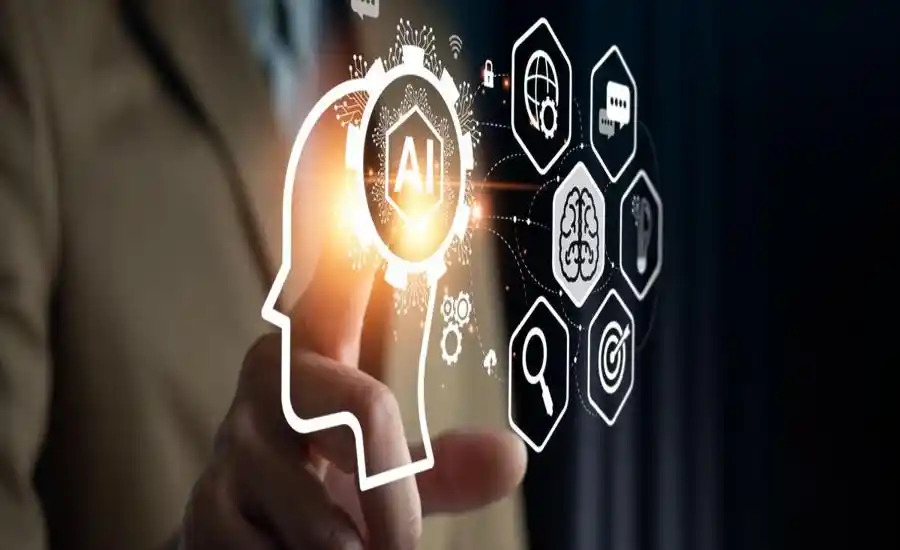The rapid evolution of artificial intelligence (AI) and automation is reshaping HR operations, making them more efficient, data-driven, and strategic. By leveraging AI tools and automated systems, HR professionals can streamline workflows, enhance decision-making, and improve employee experiences. Let’s explore how AI and automation are transforming HR and driving a data-driven future.
1. The Current State of AI and Automation in HR
AI and automation have become integral to HR processes, with a significant number of organizations adopting these technologies:
- 50% of companies are now using AI in at least one HR function (SHRM, 2023).
-
 A visual breakdown of how AI and automation are reshaping HR — from job risk and efficiency gains to growing adoption and future expectations.
A visual breakdown of how AI and automation are reshaping HR — from job risk and efficiency gains to growing adoption and future expectations. - The global HR technology market is expected to grow to $53.3 billion by 2028, driven by AI and automation innovations (Fortune Business Insights).
2. Transforming Core HR Functions
A. Recruitment and Talent Acquisition
- AI-driven systems are revolutionizing hiring by automating repetitive tasks like resume screening, candidate matching, and interview scheduling.
- Example: IBM’s Watson Talent automates candidate assessments, reducing hiring time by 30% and improving the quality of hires.
Stat: AI tools improve the recruiter experience by 72%, according to an Oracle study.
- Example: IBM’s Watson Talent automates candidate assessments, reducing hiring time by 30% and improving the quality of hires.
- Stat: AI tools improve the recruiter experience by 72%, according to an Oracle study.
B. Onboarding and Training
AI-powered chatbots provide personalized onboarding experiences, answering FAQs and guiding new hires through processes.

- Automated learning platforms like Degreed offer tailored training programs by analyzing employee skills and career goals.
C. Workforce Analytics
AI helps HR professionals analyze workforce trends, predict turnover, and assess employee engagement.
- Example: PepsiCo uses AI analytics to identify high-potential employees, reducing attrition by 15%.
D. Performance Management
Automation tracks employee performance metrics in real time, providing actionable insights for fair evaluations and development planning.
- Example: Workday’s AI tools allow organizations to monitor key performance indicators (KPIs) and adjust goals dynamically.
3. Enhancing Employee Experience
AI and automation aren’t just about efficiency; they’re transforming how employees interact with HR systems:
-
Personalized Support:
AI chatbots like SAP’s Concur handle queries 24/7, improving employee satisfaction.
-
Seamless Self-Service:
Automated platforms enable employees to access benefits, request leave, and update details without HR intervention.
Stat: 68% of employees believe AI improves their workplace experience by reducing administrative burdens (PwC, 2023).
4. Driving Strategic Decision-Making
AI empowers HR leaders to make data-driven decisions by:
-
Predicting Talent Needs:
AI forecasts workforce requirements based on organizational growth trends.
-
Diversity and Inclusion (D&I):
Algorithms identify biases in hiring, ensuring fair opportunities.
-
Compensation Analytics:
AI evaluates market trends to create competitive compensation strategies.
Example: A large retail chain used AI to optimize workforce scheduling, saving $10 million annually in labor costs.
5. The Future: Integration and Challenges
As we move toward a fully automated HR ecosystem, integration and ethical considerations become paramount:
-
Unified HR Platforms:
Tools like Oracle HCM Cloud and BambooHR are integrating recruitment, performance, and payroll for a cohesive experience.
-
Ethical AI Use:
Transparency and fairness in AI algorithms are essential to prevent bias and ensure trust.
Stat: By 2030, AI and automation are projected to reduce administrative HR tasks by 60%, freeing up HR professionals to focus on strategic initiatives (McKinsey).
6. Best Practices for Adopting AI and Automation in HR
To successfully implement AI and automation:
-
Focus on Data Quality:
Clean, unbiased data is crucial for AI accuracy.
-
Start Small:
Pilot AI tools in specific functions before organization-wide adoption.
-
Upskill HR Teams:
Equip HR professionals with the skills to manage AI systems effectively.
-
Monitor Impact:
Regularly evaluate the effectiveness and fairness of AI implementations.
Conclusion
AI and automation are not just reshaping HR—they are redefining its purpose. By automating routine tasks, enhancing data-driven decision-making, and elevating employee experiences, these technologies are paving the way for a smarter, more agile HR function. Organizations that embrace AI and automation today will be better positioned to attract top talent, foster innovation, and thrive in a data-driven future.
